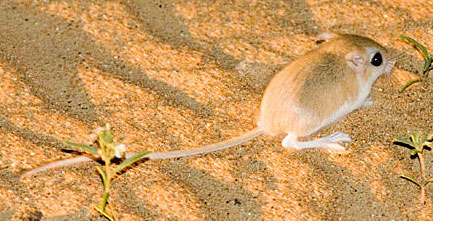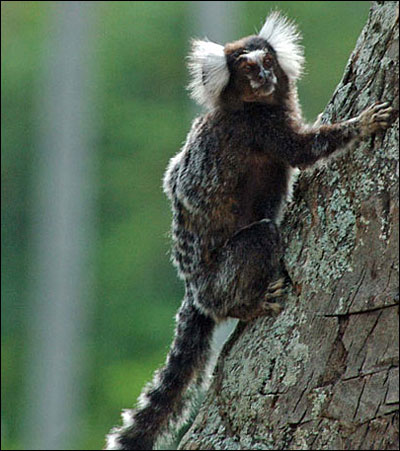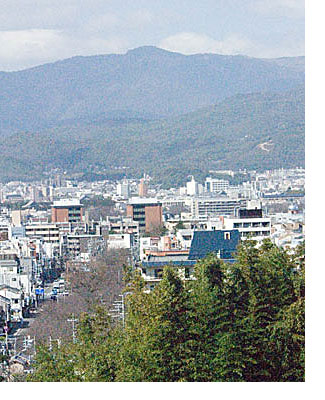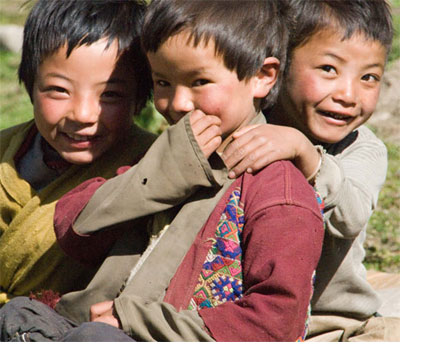Conservation in the United Arab Emirates
 The Dubai Desert Conservation Reserve is presently the largest protected area in all of the 7 United Arab Emirates, which encompass 83,600 square kilometers. With increasing development in Dubai, desert habitat and wildlife are vanishing. Over 4.7 million human inhabitants and feverish consumerism has left the biological heritage of this… Continue reading
The Dubai Desert Conservation Reserve is presently the largest protected area in all of the 7 United Arab Emirates, which encompass 83,600 square kilometers. With increasing development in Dubai, desert habitat and wildlife are vanishing. Over 4.7 million human inhabitants and feverish consumerism has left the biological heritage of this… Continue reading
Preserving the Suriname Rainforest
With a population under 500,000 as of mid-2007 and projections indicating little demographic change for the next fifty years, Suriname still has more than 95% of the country’s habitat in a virtually untouched situation. That’s 38 million acres of wilderness, or the equivalent of more than six Yellowstone National Parks. It is the size of Wisconsin or Bangladesh or 163,265 square kilometers… Continue reading
Preserving the Rainforest in Singapore
Along with the 32 square kilometer Tijuca National Park (Floresta de Tijuca) above Rio de Janeiro, Bukit Timah’s 183 hectares of primary tropical rainforest in the heart of Singapore, protected since the 1880s, represent one of the truly unique urban ecosystems on the planet. This Nature Reserve is consistent with a country and a city whose verdant celebrity has evolved with deliberate finesse. With… Continue reading
Forest Conservation in Poland
Bialowieza National Park in eastern Poland, is the last remaining true primordial forest in all of Europe. It represents what Europe looked like prior to the last Ice Age ten thousand years ago when the European Bison, or Wisent, first described by Aristotle, was numerous. Today that species — distinct from the Canadian Wood and American Prairie bison — is still under threat. Approximately 3,500… Continue reading
Peru: Hotspots Capital of the World
 The Peruvian section of the DSF film “Hotspots” was motivated by the recognition that the Tropical Andes represent, in Dr. Mittermeier’s words, “the global epicenter of biodiversity because it has far more species than any other hotspot on the planet: 1,728 species of birds of which nearly 600 are… Continue reading
The Peruvian section of the DSF film “Hotspots” was motivated by the recognition that the Tropical Andes represent, in Dr. Mittermeier’s words, “the global epicenter of biodiversity because it has far more species than any other hotspot on the planet: 1,728 species of birds of which nearly 600 are… Continue reading
Madagascar Conservation Progress
Antananarivo is the capital of Madagascar, a nation of 17.3 million people that is emblematic of all the 35 biological hotspots on the planet, where some 300 million people live within 10 kilometers of the protected areas found there. Many of those people are poor and their livelihood — poverty alleviation — is critical if conservation initiatives are to succeed. If conservation initiatives are to succeed… Continue reading
Conservation International Japan: Saving the Moss
 Mount Fuji will soon be without snow, though such climate-related perturbations are not new to this country of several recent extinctions, including the Pungitius sinensis, Minami-tomiyo, a freshwater fish last seen in a creek in Kyoto in the early 1950s. But, it is the moss species that DSF recently sought to document photographically… Continue reading
Mount Fuji will soon be without snow, though such climate-related perturbations are not new to this country of several recent extinctions, including the Pungitius sinensis, Minami-tomiyo, a freshwater fish last seen in a creek in Kyoto in the early 1950s. But, it is the moss species that DSF recently sought to document photographically… Continue reading
Conservation in Bhutan
 DSF’s commitment to Bhutanese environmental protection and indigenous culture stems from the recognition that the country has managed to create one of the greatest blueprints for successful conservation anywhere in the world, with a protected network encompassing over 28% of this important Buddhist nation in an eastern Himalayan hotspot. In the 1970s the Fourth King… Continue reading
DSF’s commitment to Bhutanese environmental protection and indigenous culture stems from the recognition that the country has managed to create one of the greatest blueprints for successful conservation anywhere in the world, with a protected network encompassing over 28% of this important Buddhist nation in an eastern Himalayan hotspot. In the 1970s the Fourth King… Continue reading
 The Dubai Desert Conservation Reserve is presently the largest protected area in all of the 7 United Arab Emirates, which encompass 83,600 square kilometers. With increasing development in Dubai, desert habitat and wildlife are vanishing. Over 4.7 million human inhabitants and feverish consumerism has left the biological heritage of this… Continue reading
The Dubai Desert Conservation Reserve is presently the largest protected area in all of the 7 United Arab Emirates, which encompass 83,600 square kilometers. With increasing development in Dubai, desert habitat and wildlife are vanishing. Over 4.7 million human inhabitants and feverish consumerism has left the biological heritage of this… Continue reading The Peruvian section of the DSF film “Hotspots” was motivated by the recognition that the Tropical Andes represent, in Dr. Mittermeier’s words, “the global epicenter of biodiversity because it has far more species than any other hotspot on the planet: 1,728 species of birds of which nearly 600 are…
The Peruvian section of the DSF film “Hotspots” was motivated by the recognition that the Tropical Andes represent, in Dr. Mittermeier’s words, “the global epicenter of biodiversity because it has far more species than any other hotspot on the planet: 1,728 species of birds of which nearly 600 are…  Mount Fuji will soon be without snow, though such climate-related perturbations are not new to this country of several recent extinctions, including the Pungitius sinensis, Minami-tomiyo, a freshwater fish last seen in a creek in Kyoto in the early 1950s. But, it is the moss species that DSF recently sought to document photographically…
Mount Fuji will soon be without snow, though such climate-related perturbations are not new to this country of several recent extinctions, including the Pungitius sinensis, Minami-tomiyo, a freshwater fish last seen in a creek in Kyoto in the early 1950s. But, it is the moss species that DSF recently sought to document photographically…  DSF’s commitment to Bhutanese environmental protection and indigenous culture stems from the recognition that the country has managed to create one of the greatest blueprints for successful conservation anywhere in the world, with a protected network encompassing over 28% of this important Buddhist nation in an eastern Himalayan hotspot. In the 1970s the Fourth King…
DSF’s commitment to Bhutanese environmental protection and indigenous culture stems from the recognition that the country has managed to create one of the greatest blueprints for successful conservation anywhere in the world, with a protected network encompassing over 28% of this important Buddhist nation in an eastern Himalayan hotspot. In the 1970s the Fourth King… 